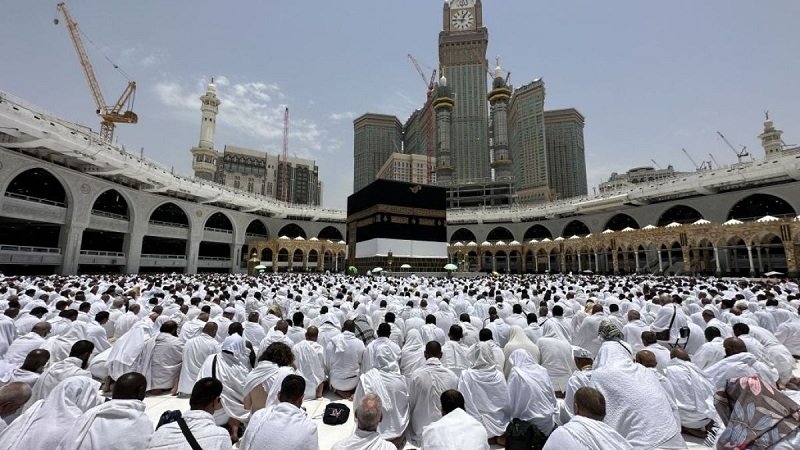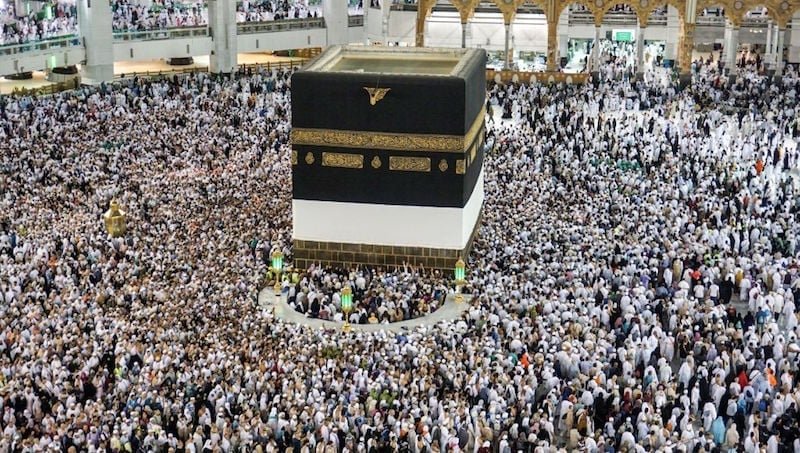The Hajj pilgrim turnout lowest in 3 decades news has caught the attention of many Muslims and observers worldwide. In 2025, the annual pilgrimage to Mecca saw the smallest number of pilgrims since the early 1990s, excluding the Covid pandemic years. This significant drop has surprised many, as global travel has mostly returned to normal. In this article, we will explore the reasons behind the decline, its impact, historical context, and what the future might hold for this sacred journey.
What Is Hajj and Why Is It Important?
Hajj is one of the five pillars of Islam, making it a mandatory religious duty for every able-bodied Muslim who can afford to undertake the journey at least once in their lifetime. Each year, millions travel from around the world to the holy city of Mecca in Saudi Arabia to perform a series of rituals that commemorate the actions of Prophet Abraham and his family.
Hajj is not only a spiritual journey but also a moment of unity, as Muslims from all races and backgrounds gather to worship together. The pilgrimage typically happens over five days during the Islamic month of Dhu al-Hijjah.

The 2025 Hajj Pilgrim Turnout: Lowest in 30 Years
This year, Saudi Arabia reported that the number of pilgrims attending Hajj has dropped sharply. Official statistics show the turnout is the lowest since the early 1990s, excluding the strict Covid lockdown years between 2020 and 2022. These lockdown years had severely limited pilgrim numbers due to health and safety concerns worldwide.
Unlike those pandemic years, the 2025 decline is unexpected because travel restrictions have been relaxed globally. The number of pilgrims usually increases each year as more Muslims gain access to international travel.

Why Has the Hajj Pilgrim Turnout Dropped So Much?
Several reasons have contributed to this record low turnout in 2025:
1. Rising Travel and Living Costs
The cost of travel has risen significantly in recent years. Airline tickets to Saudi Arabia have become more expensive due to higher fuel prices and increased demand. Additionally, accommodation and food prices in Mecca during Hajj have also gone up, making the pilgrimage less affordable for many.
Many pilgrims rely on savings or financial support from family to fund their trip, and these rising costs can be a major obstacle.
2. Political and Regional Instability
Certain countries with large Muslim populations are facing political tensions, conflicts, or instability. These situations create safety concerns and travel difficulties for pilgrims trying to get to Saudi Arabia.
For example, ongoing regional conflicts or diplomatic issues can result in visa delays or cancellations.
3. Lingering Health Concerns
Although the Covid-19 pandemic has largely ended, some people remain cautious about traveling to large gatherings. The close quarters during Hajj rituals make it a potential hotspot for the spread of infections.
Health concerns, especially among older pilgrims or those with medical conditions, might have led some to postpone their plans.
4. Changes in Visa and Quota Systems
Saudi Arabia sets quotas on the number of pilgrims each country can send based on Muslim population and other factors. This year, adjustments in these quotas might have limited the number of approved pilgrims from some countries.
Visa application procedures have also become more complex in some cases, discouraging potential pilgrims.
5. Economic Pressures Worldwide
Global inflation, economic slowdowns, and uncertainties have affected many countries, especially lower-income Muslim nations. Families may prioritize essential expenses over religious travel during tough economic times.
The Impact of Low Pilgrim Numbers on Mecca and Beyond

The decline in pilgrims impacts several areas:
Local Economy
Mecca’s economy is closely tied to Hajj. The pilgrimage season generates billions in revenue for Saudi Arabia from hotels, transportation, restaurants, and retail businesses. A drop in pilgrims means less income for these sectors, potentially leading to job losses and economic slowdown in the region.
The Pilgrimage Experience
With fewer people, the Hajj experience itself changes. Some pilgrims say that the reduced crowd sizes allow for easier movement and a more peaceful atmosphere. However, others feel that the energy and spirit of the pilgrimage depend on large gatherings and shared devotion.
Religious and Social Effects
Hajj plays a significant role in Muslim identity and community. A decline in pilgrim numbers might affect how young Muslims view the pilgrimage, possibly reducing enthusiasm for future participation.
Religious leaders are concerned about maintaining the importance of Hajj in a changing world.
Looking Back: Hajj Pilgrim Trends Over the Years
Hajj pilgrim numbers have fluctuated in the past due to various global events and policies:
- 1990s: Numbers were lower due to regional conflicts like the Gulf War and stricter Saudi regulations.
- 2000s-2010s: Steady growth was seen with more accessible travel options and rising incomes in Muslim countries.
- 2020-2022: The Covid-19 pandemic caused the lowest turnout in history due to travel bans and health restrictions.
- 2023-2024: Numbers rebounded as restrictions eased and vaccinations spread.
- 2025: Unexpected drop, lowest in 30 years excluding the pandemic.
This shows that Hajj attendance is sensitive to external factors beyond just religious motivation.
What Are Authorities Doing to Address the Decline?
Saudi officials and religious authorities are aware of the situation and have started planning ways to encourage more pilgrims in the future. Some actions include:
- Reducing Costs: Working with airlines and hospitality sectors to offer better prices and packages.
- Simplifying Visa Procedures: Making applications faster and easier to access.
- Increasing Pilgrim Quotas: Adjusting the limits to accommodate more pilgrims from different countries.
- Health and Safety Improvements: Ensuring better medical facilities and preventive measures during Hajj.
- Community Outreach: Promoting awareness about the spiritual importance of Hajj in Muslim countries.
Pilgrim Stories: What Do Pilgrims Say?
Some pilgrims who traveled this year shared their views:
- “With fewer crowds, I was able to perform the rituals calmly and without stress,” said Ahmed, a pilgrim from Egypt.
- “The rising costs made it hard for my family, but we saved for years to make this journey,” said Fatima from Pakistan.
- “I decided to wait another year because of health concerns, but I pray to go soon,” shared an elderly pilgrim from Indonesia.
These personal experiences show the mixed feelings around this year’s pilgrimage.
What Could Happen Next?

Experts suggest the decline could be temporary if Saudi Arabia and the Muslim world address the challenges effectively. However, some believe that the world’s changing economic and political landscape might mean pilgrim numbers fluctuate more frequently in the future.
There is also hope that technology and virtual experiences might support those unable to attend physically, although nothing can replace the actual pilgrimage.
Conclusion
The Hajj pilgrim turnout lowest in 3 decades excluding Covid is a wake-up call for the Muslim community and Saudi authorities. The pilgrimage remains a sacred duty and a source of unity, but the challenges of modern life affect even the most important traditions.
Understanding the reasons behind the decline helps prepare for a stronger future where more Muslims can safely and affordably fulfill their religious obligations.
The spiritual journey of Hajj will continue to inspire millions, and with proper support, the numbers will rise again in the years ahead.
Do follow UAE Stories on Instagram
Read More: Sharjah Police Eid Message Honors Officers as True Community Heroes














